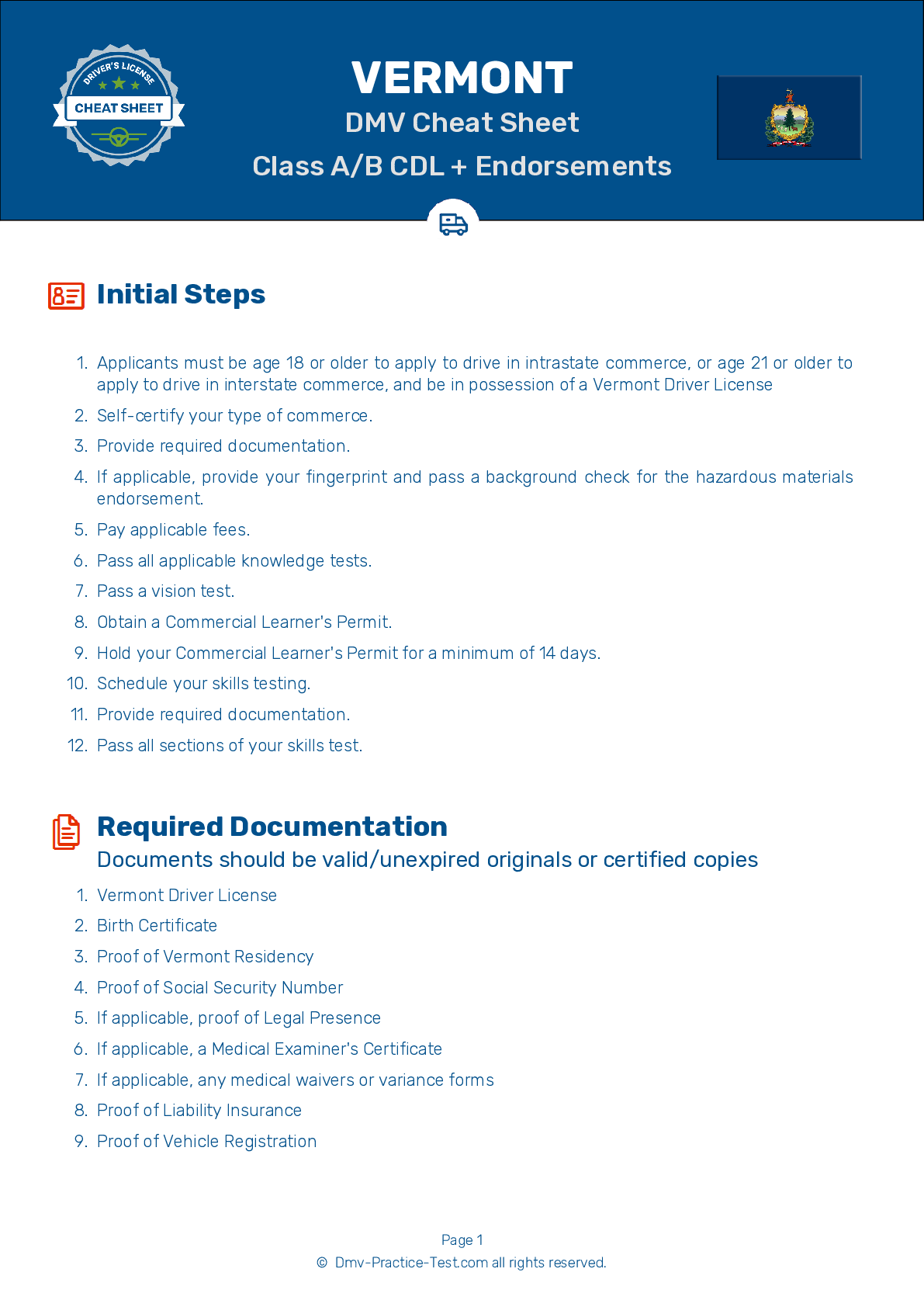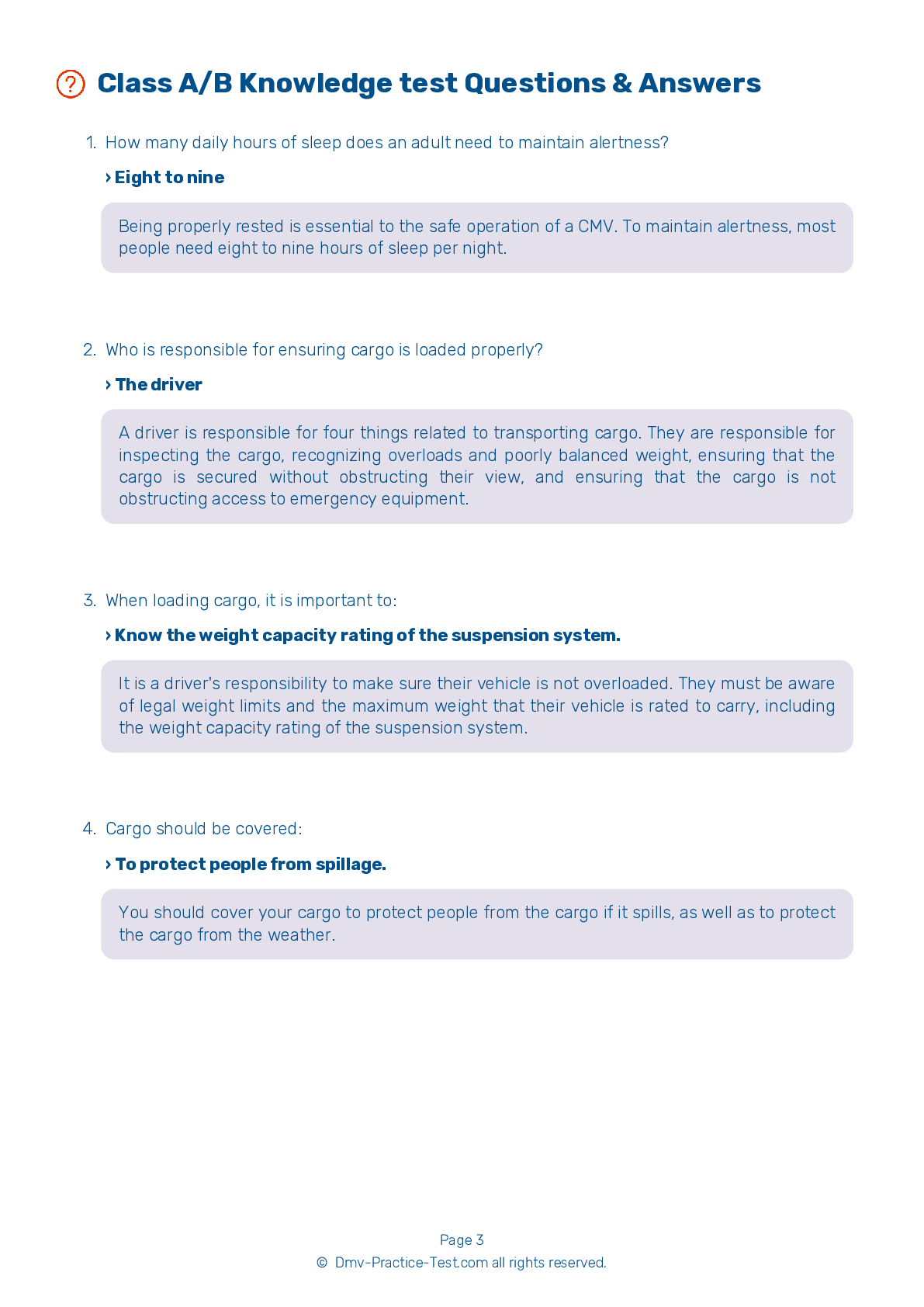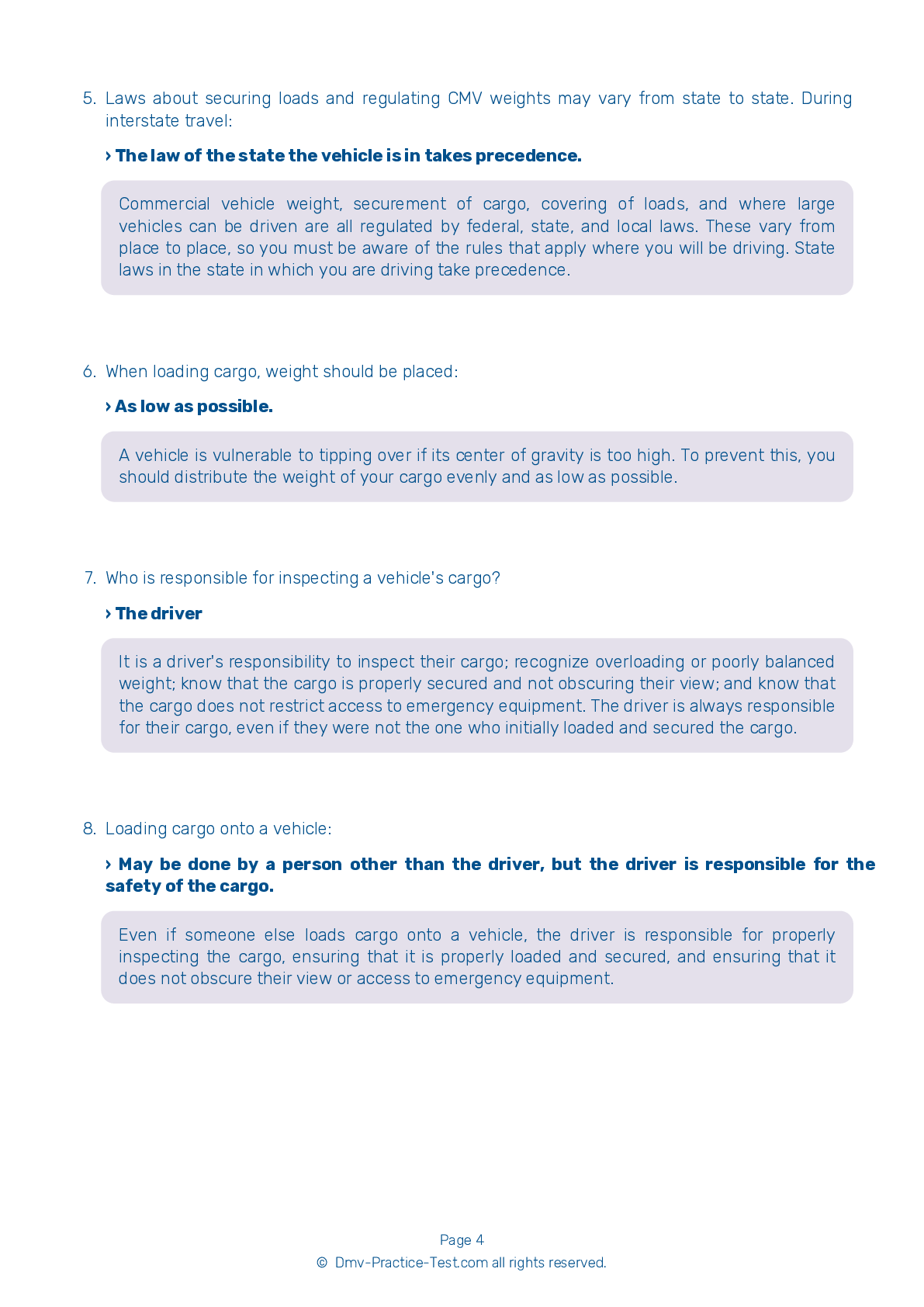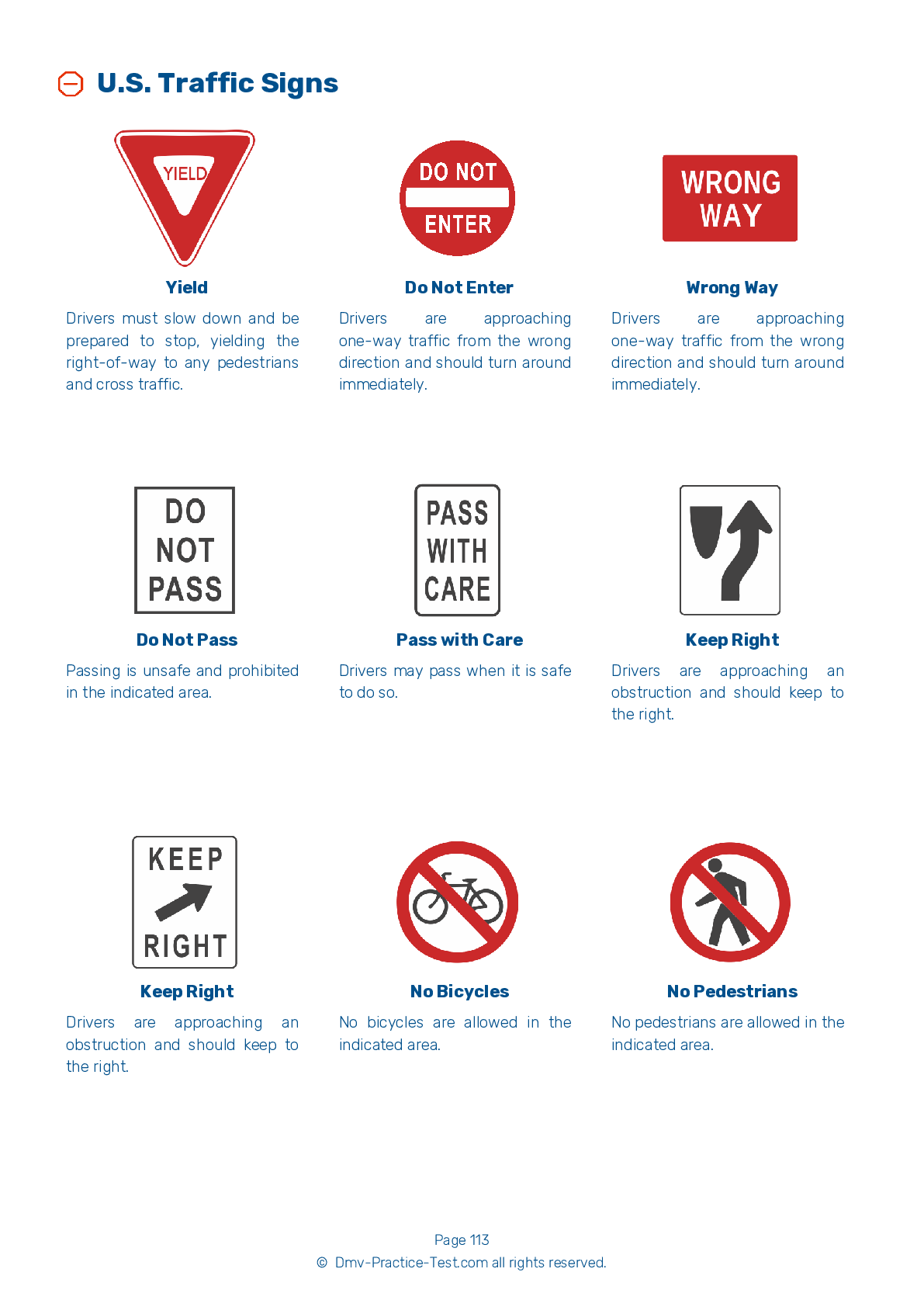Class B Driving Test | Vermont 2025 #1
Train for FREE online with our Vermont class B license test. The official exam test consists of several obligatory parts, with all of them checking your knowledge of different blocks of road rules. If you need to obtain a VT CDL class B permit in 2025, practice as much as possible. Free sample tests published on our website will help you check and improve your knowledge and boost your grades. Please bear in mind that CDL class B requirements may vary from state to state.
1 . The center of gravity in a trailer should be:
The weight of cargo in a vehicle should be distributed as low as possible. Having a center of gravity that is too high will increase the risk of a rollover.
2 . A low air pressure warning signal should activate:
In an air brake system, a low air pressure warning signal must come on if air pressure in the tanks falls below 55 psi. This warning signal may come in the form of a light, a buzzer, or a wig wag.
3 . When operating a truck requiring a CDL:
A driver's seat should always be equipped with a seat belt. You must wear a seat belt at all times while operating a CMV.
4 . If a vehicle is equipped with an Anti-Lock Braking System (ABS), when the vehicle is started:
After starting the engine of a vehicle equipped with an Anti-Lock Braking System (ABS), the indicator light should come on and then turn off. If the light stays on, something is wrong with the ABS.
5 . Alcohol can be removed from your system:
The liver removes alcohol from the body at a fixed rate, so the only way to sober up after consuming alcohol is to allow your body time to remove the alcohol on its own.
6 . Which of the following is not a reason to cover cargo?
The two basic reasons to cover cargo are to protect people from the cargo if it spills and to protect the cargo from weather conditions.
7 . Texting while driving is especially dangerous because:
Texting while driving is particularly dangerous because it is both a mental and physical distraction to the driver. In addition to diverting a driver's mental attention away from the road, texting requires a person to remove at least one hand from the vehicle's controls.
See the exact questions that will be on the 2025 Vermont DMV exam.
99.2% of people who use the cheat sheet pass the FIRST TIME
Lillian MCcranie explains how our CDL study guide was helpful in passing the exam and recommends it to everyone.
Cameron tells us how he purchased the CDL exam, and found it to be a useful tool which helped him pass the exam and find a job.



